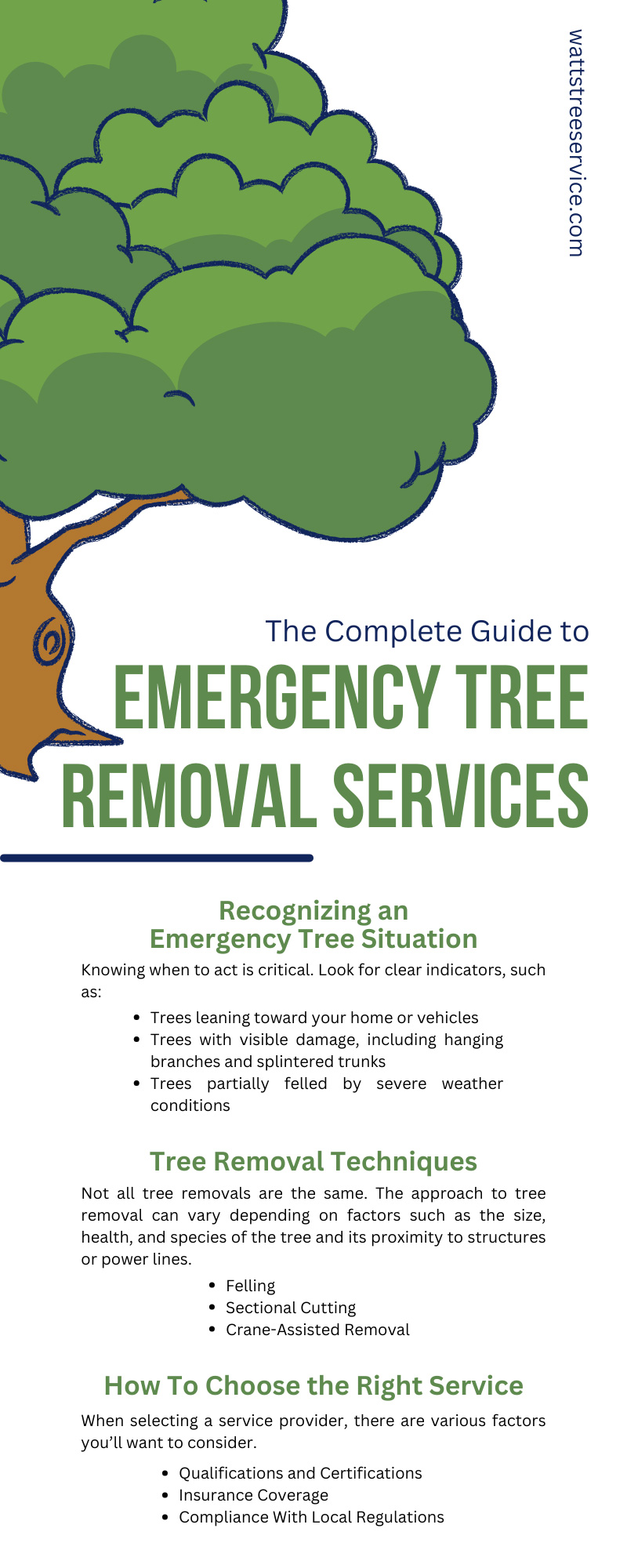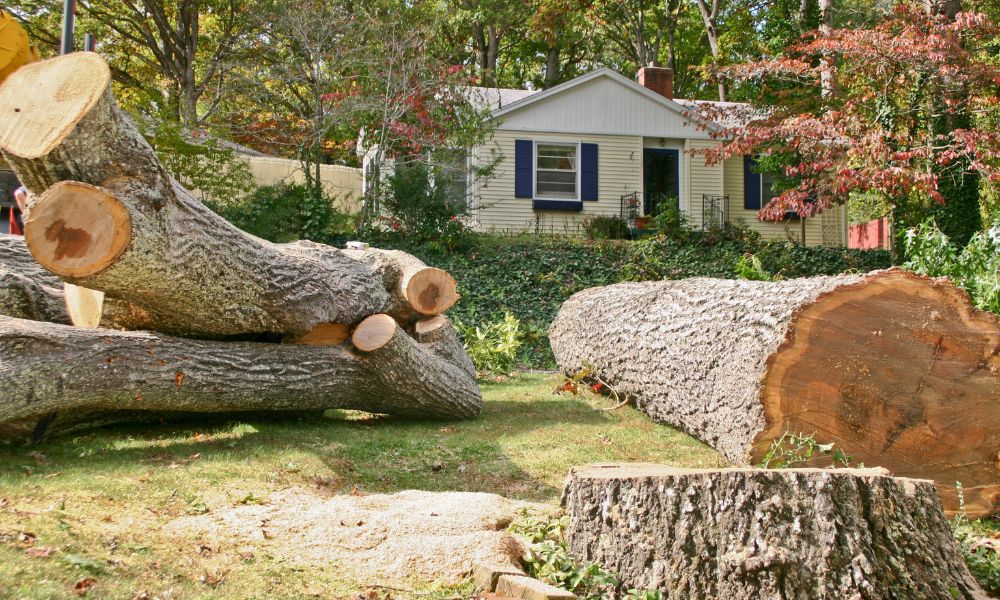For any homeowner, the presence of trees can be a delight, adding aesthetic appeal to your surroundings, providing shade in the summer, and even increasing your property value. Trees are an integral part of our ecosystem, but they also come with certain risks and can even turn hazardous. How do you distinguish between when a tree is just your garden’s centerpiece and when it poses a threat to your safety and property? And if it does become a threat, what are your options for immediate action? We’ll provide a complete guide to emergency tree removal services with clear steps to address tree-related emergencies efficiently and safely.
Importance of Emergency Tree Removal for Homeowners
Home is where the heart is, but safety and security are non-negotiable. Trees that show signs of danger can quickly become a cause of damage, leading to significant financial and emotional strain for families.
Emergency tree removal services are about more than just the tree. They are about ensuring safety, maintaining property value, and restoring peace of mind. When you understand the gravity of such services, you can see the immediate need for a plan of action should you face a concerning tree-related incident.
Understanding Emergency Tree Removal
When does a tree situation become an emergency? It’s usually when there’s a sudden and significant risk of damage or injury. This change could be due to severe weather, visible signs of damage or disease, or recent trauma to the tree’s structure.
Recognizing an Emergency Tree Situation
Knowing when to act is critical. Look for clear indicators, such as:
- Trees leaning toward your home or vehicles
- Trees with visible damage, including hanging branches and splintered trunks
- Trees partially felled by severe weather conditions
The Risks of Delaying Removal
Delaying emergency tree removal can lead to:
- Increased risk of injuries to people
- Damages to structures and vehicles
- Compromising the safety and health of the tree itself
Steps of Emergency Tree Removal
What happens during an emergency tree removal service? It begins with an assessment, during which professionals evaluate the situation and decide on the best course of action. This process often requires meticulous planning to ensure safety and effectiveness.
Assessment and Planning
The first step is the crucial initial assessment and planning stage. During the assessment, the arborist gathers detailed information about various aspects, such as the tree’s size, species, and immediate environment. This comprehensive evaluation allows the professional arborist to assess the level of risk involved and determine the precise steps required for the tree removal process.
Safety Precautions and Gear
The following step in the emergency tree removal process involves gathering the necessary gear, such as protective gloves, helmets, and safety harnesses. Additionally, it is crucial to inspect the area surrounding the tree to ensure there are no potential hazards that could jeopardize the safety of the removal process. These preventive measures will help create a safer working environment for the team carrying out the tree removal operation.
The Removal Process
From the initial assessment to the precise felling of the tree and the cleanup process, each step plays a vital role in ensuring a seamless and secure removal. Experienced professionals consider factors such as employing proper cutting techniques, strategizing obstacle management, and implementing safety protocols to guarantee a successful and efficient tree removal service.
Tree Removal Techniques
Not all tree removals are the same. The approach to tree removal can vary depending on factors such as the size, health, and species of the tree and its proximity to structures or power lines. Different techniques, including tree climbing, rigging, or the use of heavy machinery, may be necessary to safely and effectively remove trees while considering environmental impact and safety measures.
Felling
The traditional technique of cutting down a tree involves making a precise incision at the base of the tree, strategically determining the direction of its fall. Once cut, professionals carefully guide the tree to the ground, ensuring minimal obstruction and a safe felling process.
Sectional Cutting
For larger trees or those with multiple obstacles around, the tree removal process involves dismantling the tree in sections. Experts use ropes and pulleys to carefully control the descent of the branches, ensuring a safe and precise operation.
Crane-Assisted Removal
In situations where a tree is too near buildings or too large for conventional handling, employing a crane ensures precise and safe removal. This method enhances safety measures and minimizes potential risks associated with the tree removal process.
How To Choose the Right Service
Now that you know the essentials of the emergency tree removal process, it’s important to know how to choose the right service for your needs. When selecting a service provider, there are various factors you’ll want to consider.
Qualifications and Certifications
Seek out teams with certified arborists who have undergone comprehensive training in emergency response protocols. It’s crucial to ensure that the professionals you hire are ready to handle any situation that may arise during tree care services.
Insurance Coverage
Make sure the service provider you choose is adequately insured to cover any potential damages that may occur during the removal process. This insurance is important to protect your belongings and property in case of any unforeseen accidents.
Compliance With Local Regulations
A good service provider should have a comprehensive understanding of local regulations, ensuring compliance with legal requirements. They should also proactively secure the necessary permits and licenses to carry out their work efficiently and within the bounds of the law.
Aftercare and Restoration
The work doesn’t end when the tree is down. Proper aftercare and site restoration are crucial for the cleanup process. This includes tasks such as removing debris, replanting trees if necessary, restoring the soil, and ensuring the ecosystem’s overall health. Taking these steps ensures that the area is clean and ready for future growth and sustainability.
With this complete guide to emergency tree removal services, homeowners can take proactive steps to address potentially hazardous trees before they become emergencies. Remember, in the event of an emergency, quick thinking and the right emergency tree removal service can make the difference in restoring safe and serene living conditions. Contact Watts Tree Service today to learn more about our residential tree trimming and removal services. With the insights from this guide, homeowners can confidently approach tree-related emergencies and keep their homes and families secure.

Last modified: April 25, 2025

